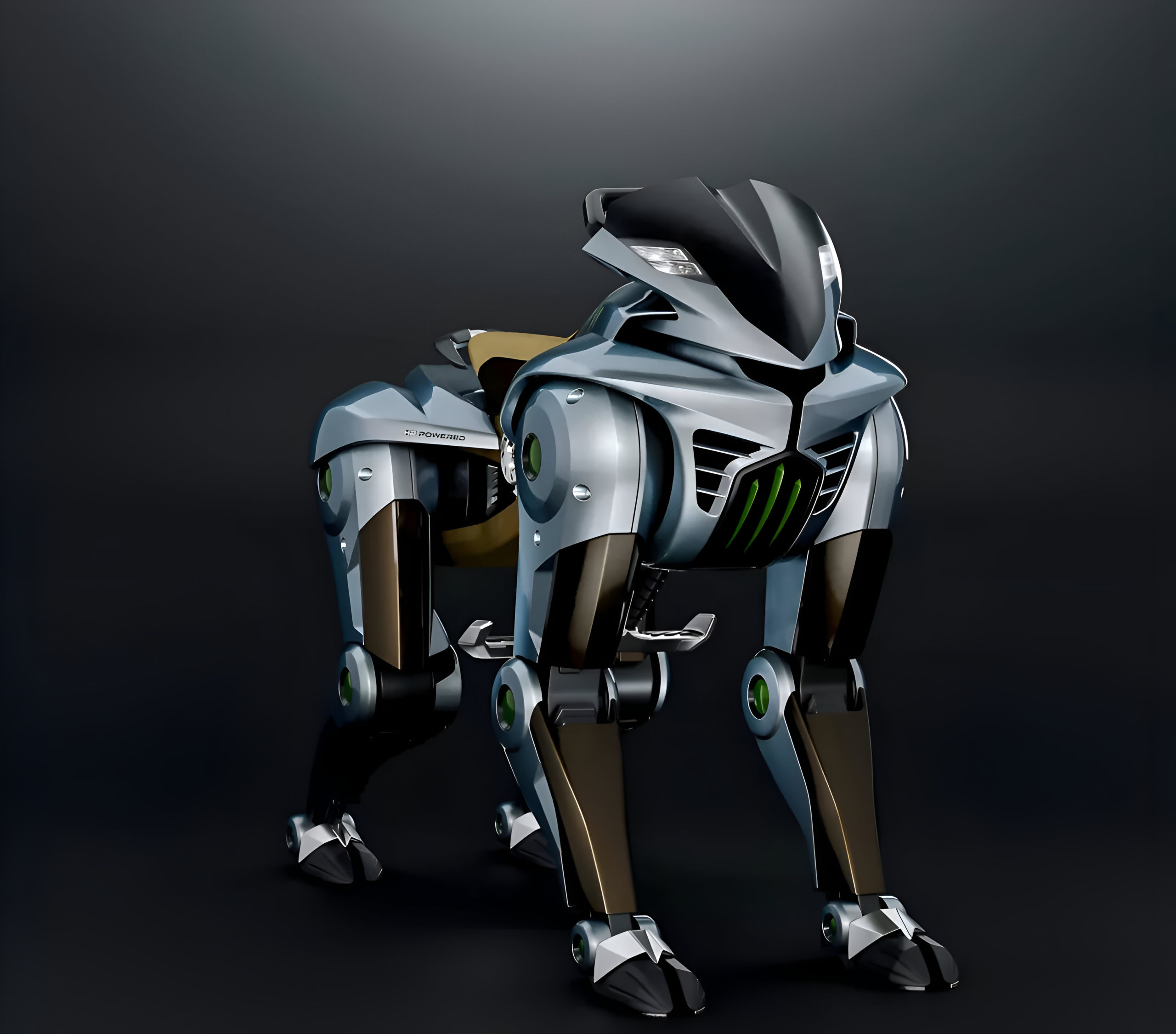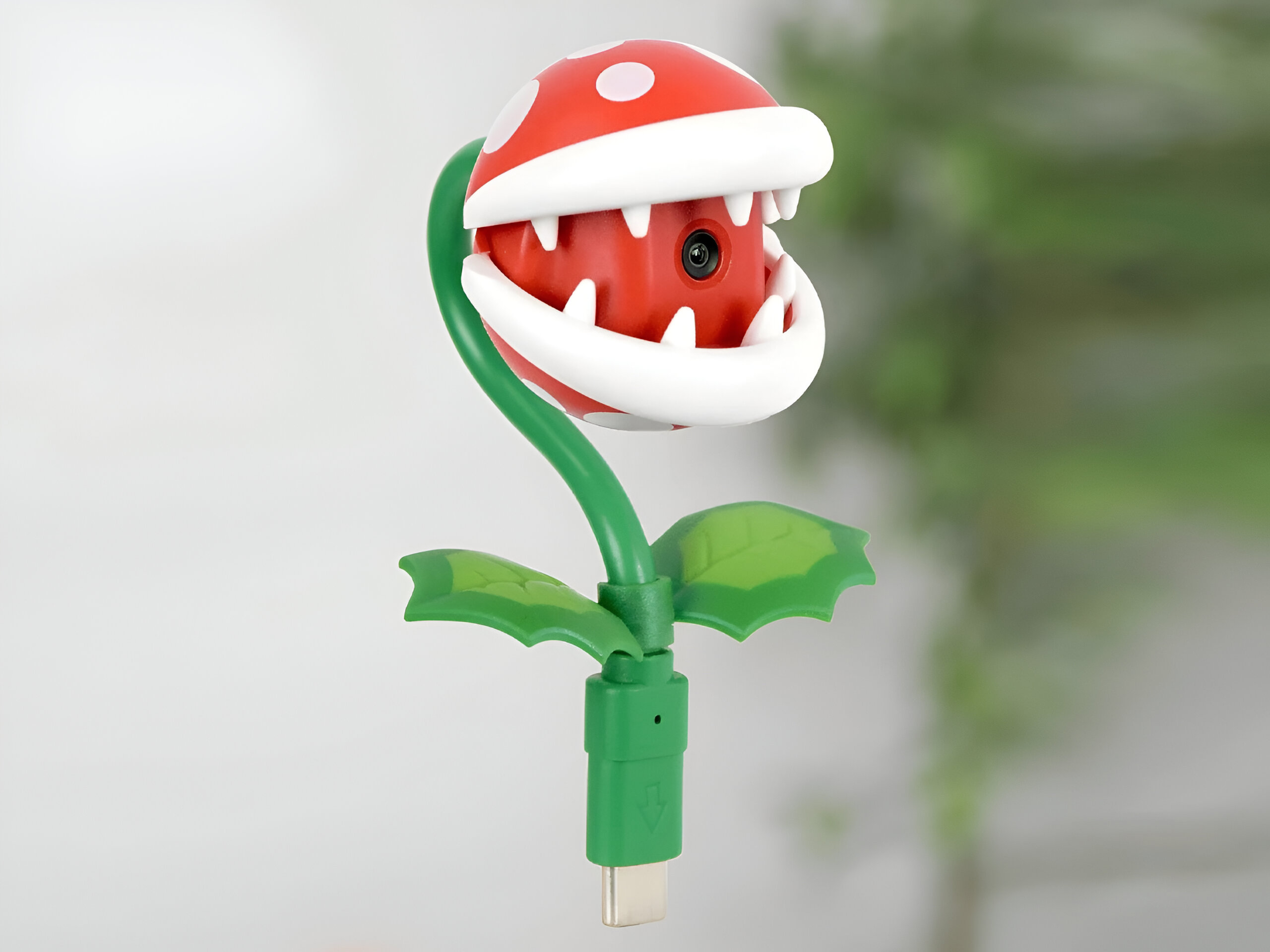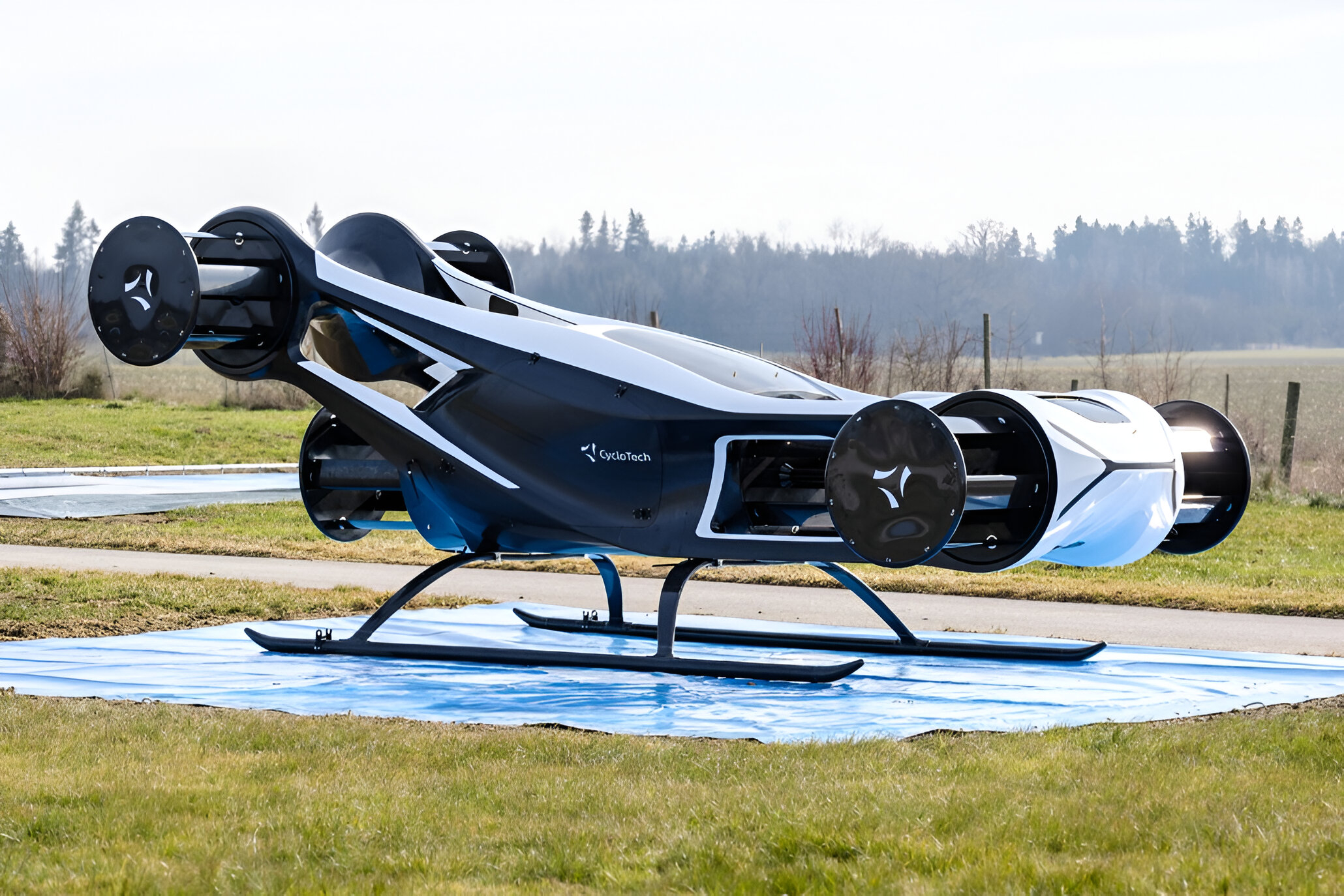Kawasaki has unveiled one of the most unusual transportation concepts in recent memory – a hydrogen-powered robotic horse called the Corleo. This futuristic vehicle blends motorcycle technology with quadrupedal robotics to create something straight out of science fiction. Though questions remain about its practical implementation, the concept represents a bold vision for off-road transportation that combines Kawasaki’s engineering expertise with cutting-edge robotics. From Wheels to Legs: Rethinking Motorcycle Mobility
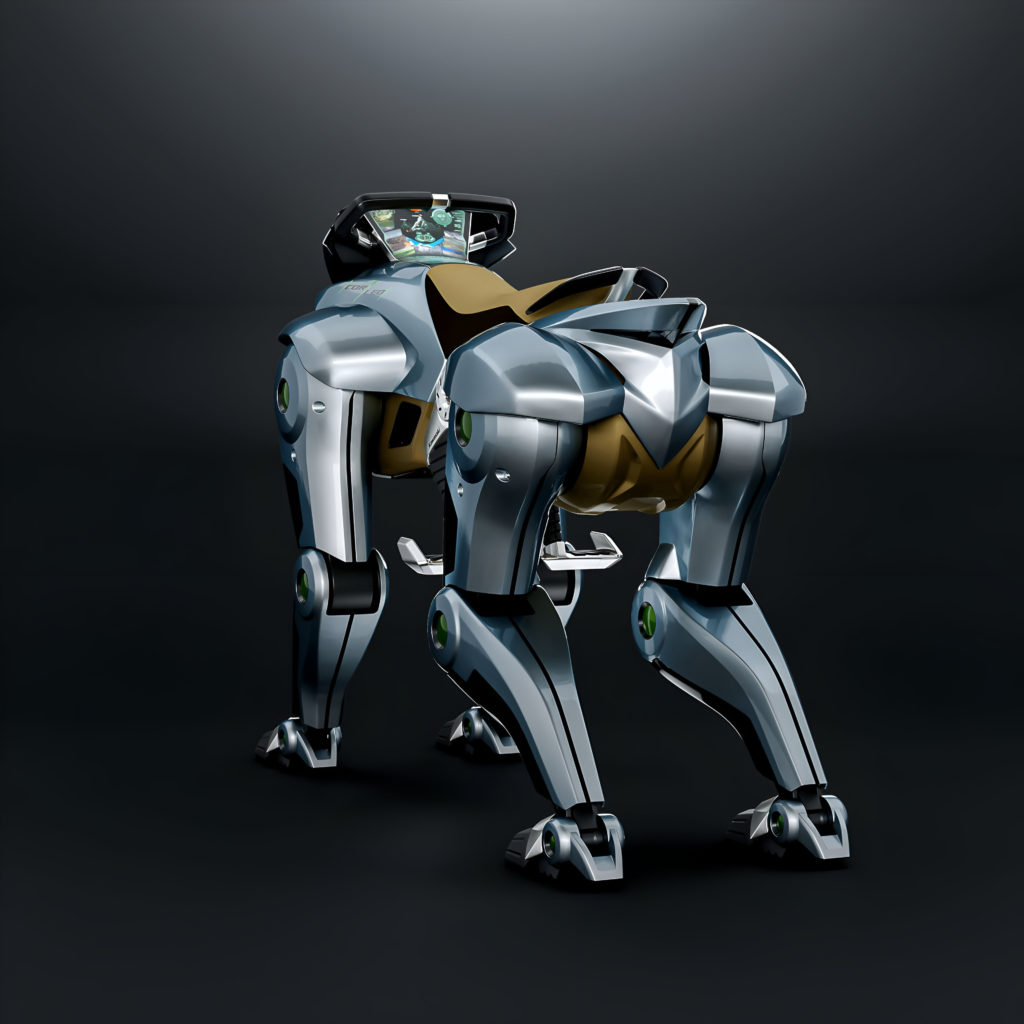
The Corleo represents a radical departure from conventional motorcycle design. Instead of wheels, this vehicle stands on four articulated robotic legs, each equipped with rubber “hooves” designed to absorb shocks and adapt to irregular terrain. While the upper portion resembles a Kawasaki Ninja motorcycle with its aerodynamic body and windscreen, the lower half transforms the concept into something entirely new.
This design shift from wheels to legs isn’t merely for show. According to Kawasaki, the independent movement of the Corleo’s legs—particularly the separation between front and rear leg movement—allows the vehicle to navigate terrains that would be impossible for wheeled vehicles. The rubber hooves can adapt to various surfaces including grasslands, rocky areas, and rubble fields, potentially making this concept a true all-terrain vehicle.
The video demonstration shows the Corleo galloping across open fields and even scaling mountain slopes with riders on its back. While questions remain about the practicality of this approach compared to traditional off-road vehicles, the concept represents an innovative vision for mobility that draws inspiration from both nature and technology. By combining the familiar form of a motorcycle with biologically-inspired locomotion, Kawasaki has created a hybrid concept that challenges our expectations about what a personal vehicle can be.
Hydrogen Power: Clean Energy for Mechanical Muscles
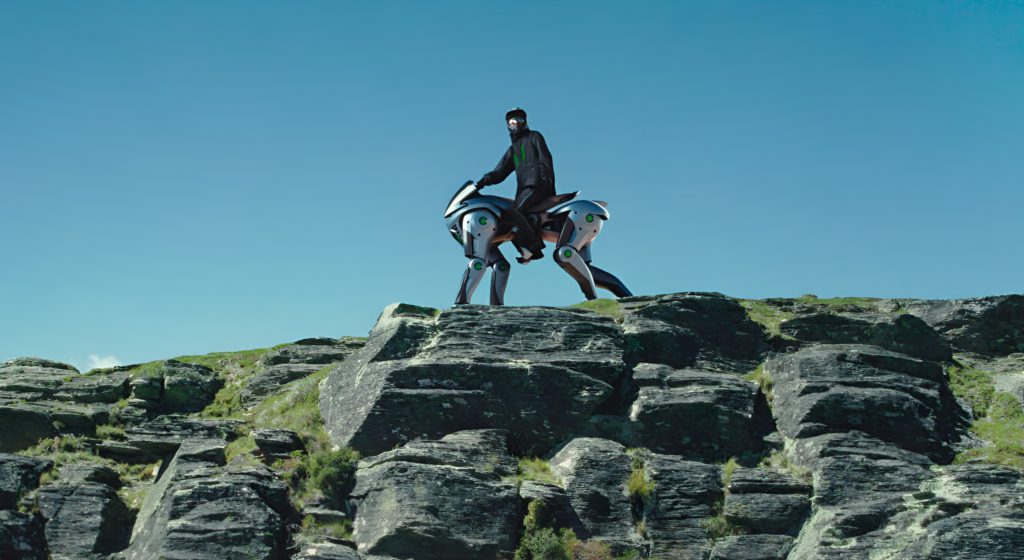
At the heart of the Corleo is its unique propulsion system—a 150cc hydrogen-fueled engine. Unlike traditional motorcycles that run on gasoline, this robotic horse carries a hydrogen canister in its rear section, offering a potentially cleaner energy source. The hydrogen engine generates electricity that powers individual drive units in each of the four legs, creating a distributed power system that enables the complex movement patterns required for walking and galloping.
This hydrogen-electric hybrid approach represents an interesting solution to the power demands of legged robotics. Battery-powered robots typically face significant limitations in range and operating time, while combustion engines bring challenges in controlling precise movements. By using hydrogen to generate electricity, Kawasaki may have found a middle ground that provides both the energy density needed for extended operation and the precise electrical control required for coordinated leg movements.
The hydrogen power source also aligns with the whimsical nature of the concept.This clean-running aspect of the design fits with the nature-inspired aesthetics of the Corleo, presenting a vision of technology that works in harmony with the environment rather than against it.
Intuitive Controls: Riding Like a Real Horse
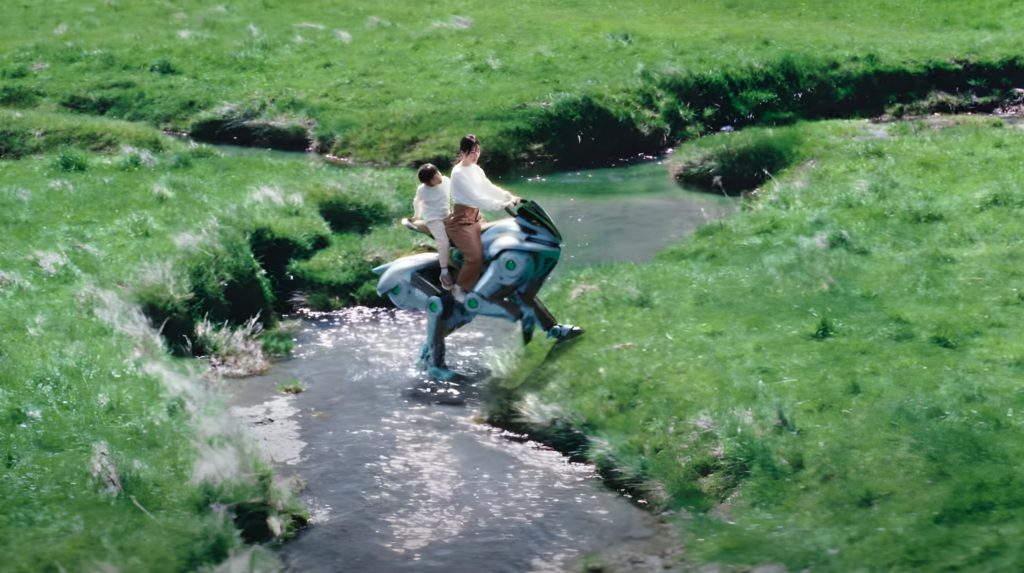
Perhaps the most surprising aspect of the Corleo concept is its control system. Despite its motorcycle-like appearance, you won’t find traditional handlebars for steering or foot controls for acceleration and braking. Instead, Kawasaki has designed the robotic horse to be guided through weight shifts detected by sensors in the stirrups and handlebars—just like riding a real horse.
This biomimetic approach to controls creates a more intuitive and immersive riding experience. Riders can lean forward to increase speed, shift their weight to one side to turn, or pull back to slow down, much as they would when riding a living animal. This control method represents a significant departure from conventional vehicle interfaces and suggests a future where transportation might become more physically engaging and naturalistic.
Behind the windscreen, the Corleo features a modern instrument panel displaying critical information including hydrogen levels and the vehicle’s center of gravity. For nighttime operation, the robotic horse projects light markers onto the ground ahead, illuminating the path forward—what the article describes as “the mechanical equivalent of a biological horse with laser eyes.” This blend of traditional horsemanship with high-tech interfaces creates a unique rider experience that bridges ancient and futuristic forms of transportation.
From Concept to Reality: The Challenges Ahead
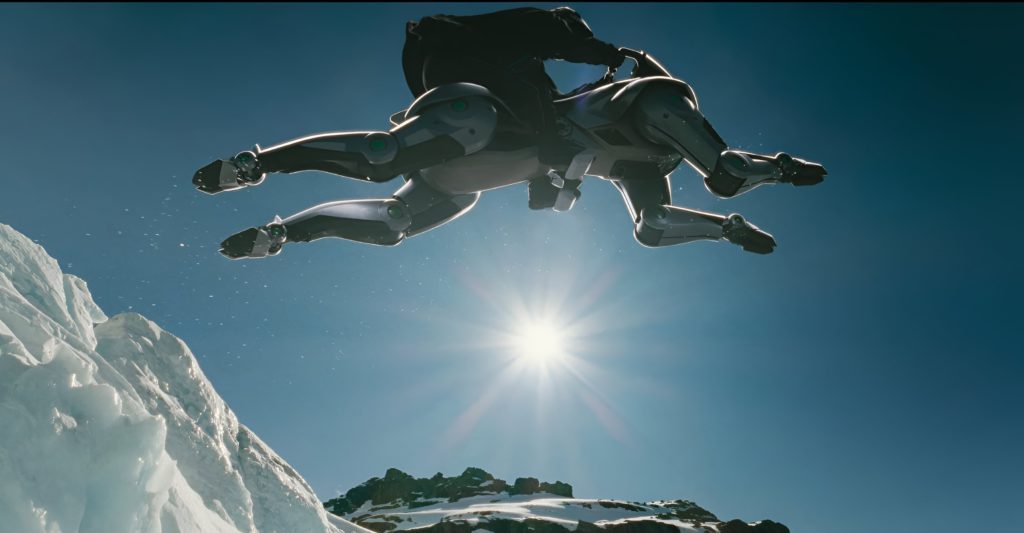
While the video demonstration shows the Corleo galloping at impressive speeds and carrying multiple riders, the reality check came at the Osaka-Kansai Expo 2025. There, Kawasaki displayed a life-sized concept that could strike poses but moved “at a glacial pace”—quite different from the dynamic performance shown in promotional materials.
This gap between concept and current capabilities highlights the significant challenges in creating a full-sized legged robot capable of carrying human passengers at high speeds. Companies like Boston Dynamics, Unitree, and Figure have made remarkable progress with quadrupedal robots, but these are typically much smaller than the Corleo and aren’t designed to carry human riders.
The ambitious nature of the Corleo raises questions about when—or if—such technology could become commercially viable. The power requirements, balance systems, and structural engineering needed to support human riders while navigating difficult terrain at speed represent significant hurdles. However, as the article notes, robotics technology continues to advance at a surprising pace, with achievements that seemed impossible just a few years ago now becoming reality.
Whether the Corleo ever trots alongside cars on city streets or remains an aspirational concept, it represents Kawasaki’s bold vision for the future of personal transportation—one that looks beyond conventional wheels to explore new possibilities inspired by the natural world. This mechanical horse may be more science fiction than imminent product, but it expands our imagination about what transportation could become in a world increasingly shaped by robotics and clean energy. Kawasaki’s recent advancements, such as its unveiling of a hybrid hydrogen-electric superbike, further underscore the company’s commitment to sustainable and innovative mobility solutions.

